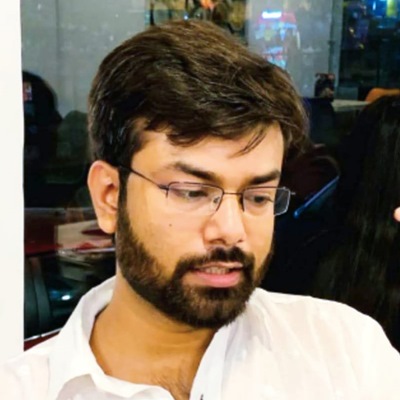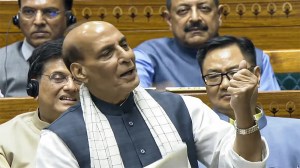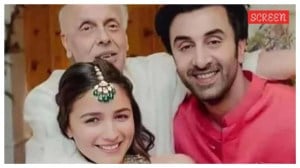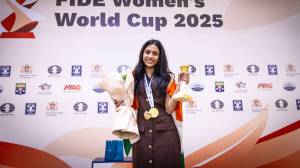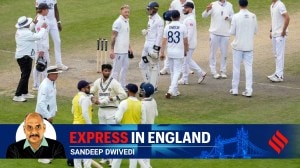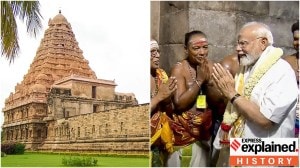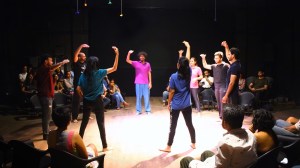UPSC Essentials | Daily subject-wise quiz: History and Culture MCQs on authors in medieval India, Sanskrit texts and more (Week 106)
Why is a recent historical biopic starring Akshay Kumar considered relevant, and who undertook the monumental task of producing the Linguistic Survey of India? — check your progress and revise your History and Culture syllabus for the UPSC CSE Prelims 2025.
 Attempt today’s subject quiz on History and Culture to check your progress.
Attempt today’s subject quiz on History and Culture to check your progress.Are you preparing for UPSC CSE Prelims 2025? UPSC Essentials brings to you its initiative of daily subject-wise quizzes. These quizzes are designed to help you revise some of the most important topics from the static part of the syllabus. Attempt today’s subject quiz on History and Culture to check your progress.
🚨 Click Here to read the UPSC Essentials magazine for March 2025. Share your views and suggestions in the comment box or at manas.srivastava@indianexpress.com🚨
QUESTION 1
With which of the following incidents in the history of modern India is Sir Chettur Sankaran Nair associated?
(a) War of 1857
(b) The Jallianwala Bagh massacre
(c) Bhagat Singh’s conviction for the murder of John Saunders
(d) The Indo-Pakistan War of 1965
Explanation
Akshay Kumar is back with another historical biopic, this time starring in Karan Johar’s Kesari Chapter 2: The Untold Story of Jallianwala Bagh. The film delves into the lesser-known story of C Sankaran Nair, a lawyer and statesman who challenged the British Raj to expose the truth behind the horrific Jallianwala Bagh massacre.
Therefore, b is the correct answer.
QUESTION 2
‘Bahishkrit Hitkarini Sabha’ was set up by:
(a) Madan Mohan Malaviya
(b)Dadabhai Naoroji
(c) Dr. B.R. Ambedkar
(d) Jyotirao Phule
Explanation
Ambedkar was the first Dalit to study at Bombay’s Elphinstone College, and he went to Columbia University on a Baroda State Scholarship and then to the London School of Economics. He was the chairman of the drafting committee of the Constitution of India, and he became the first law minister of independent India. He always championed education as a way to empowerment and societal progress and set up the ‘Bahishkrit Hitkarini Sabha’ in 1923 to spread education amongst the marginalised communities. A lawyer, economist, and political philosopher, he wrote numerous books and gave countless speeches.
Therefore, c is the correct answer.
(Refer: Knowledge Nugget for UPSC | Ambedkar Jayanti: Do you know how Father of Indian Constitution viewed Democracy and Buddhism? )
QUESTION 3
Consider the following statements with reference to the literary works ‘Padmavat’ and ‘Akhrawat’:
1. ‘Padmavat’ was written by Malik Muhammad Jayasi and ‘Akhrawat’ was written by Abdul Rahim Khan-I-Khana
2. Both the works were written in Awadhi.
Which of the above statements is/are correct?
(a) 1 only
(b) 2 only
(c) Both 1 and 2
(d) Neither 1 nor 2
Explanation
An important literary work in Awadhi is Padmavat by Malik Muhammad Jayasi, written in 1540 AD. A romantic poem, Padmavat is notable for being written by a Muslim poet who, despite seemingly no knowledge of Sanskrit, had a command of Awadhi that, Saksena claims, was even purer than that of Tulsidas. His other known work, Akhrawat, was also in Awadhi.
Therefore, b is the correct answer.
(Refer: Awadhi — A language from the Oudh struggling to retain its roots)
QUESTION 4
Consider the following statements given below:
1. A Code of Gentoo Laws — a legal compendium based on Hindu jurisprudence — was published by translator Nathaniel Brassey Halhed.
2. Orientalist Charles Wilkins translated the Bhagavad Gita into English.
3. Arthur William Ryder was an American Sanskritist who is known for the translation of Panchatantra and Bhagavad Gita.
Which of the above statements is/are true?
(a) 1 only
(b) 1 and 3 only
(c) 2 only
(d) 1, 2 and 3
Explanation
The Western encounter with Sanskrit began in earnest in the seventeenth century, but it was not until the late eighteenth century that its systematic study took shape. In 1779, A Code of Gentoo Laws — a legal compendium based on Hindu jurisprudence — was published by translator Nathaniel Brassey Halhed. Though Halhed worked from a Persian intermediary, the text represented one of the earliest efforts to engage with Indian intellectual traditions through translation.
A more significant achievement followed in 1785, when Orientalist Charles Wilkins translated the Bhagavad Gita into English. Two years later, William Jones, founder of the Asiatic Society in Calcutta, delivered the iconic lecture in which he observed striking affinities between Sanskrit, Greek, and Latin. This observation laid the foundation for the discipline of comparative linguistics and inaugurated the formal study of Indo-European philology.
One of the foremost American Sanskritists was Arthur William Ryder, who taught at the University of California, Berkeley, in the early twentieth century. His translations of the Panchatantra and Bhagavad Gita are still widely regarded for their literary merit. GR Noyes, a contemporary, wrote of him, “Taken as a whole, Ryder’s work as a translator is probably the finest ever accomplished by an American. It is also probably the finest body of translation from Sanskrit ever accomplished by one man.”
Therefore, d is the correct answer.
(Refer: How American universities embraced the study of Indian languages)
QUESTION 5
Who among the following undertook the monumental task of producing the Linguistic Survey of India (LSI) during the colonial period, aiming to document the linguistic diversity of India?
(a) Irawati Karve
(b) Thomas Babington Macaulay
(c) George Abraham Grierson
(d) James Rennell
Explanation
South Asia, home to 25% of the global population, is characterised by the widespread use of five major language families: Indo-European, Iranian, Dravidian, Tibeto-Burman, and Austro-Asiatic/Munda. According to linguists, including Javed Majeed, a professor at King’s College London, distinguishing languages from dialects in South Asia is an intense and often impossible task, further complicating the process of determining the number of languages spoken in the region.
This challenge captivated Irish-born Indian Civil Services officer George Abraham Grierson (1851–1941) to embark on the monumental task of producing the Linguistic Survey of India (LSI), a project that spanned over three decades. Published in 21 volumes between 1901 and 1928, the survey aimed to document the linguistic diversity of India. Amid ongoing debates on multilingualism, Grierson’s Linguistic Survey of India remains a foundational work, offering insight into the region’s diverse linguistic landscape.
Therefore, c is the correct answer.
(Refer: What George Grierson’s First Linguistic Survey of India tells us about multilingual South Asia )
Subscribe to our UPSC newsletter and stay updated with the news cues from the past week.
Stay updated with the latest UPSC articles by joining our Telegram channel – IndianExpress UPSC Hub, and follow us on Instagram and X.
Photos





- 01
- 02
- 03
- 04
- 05

